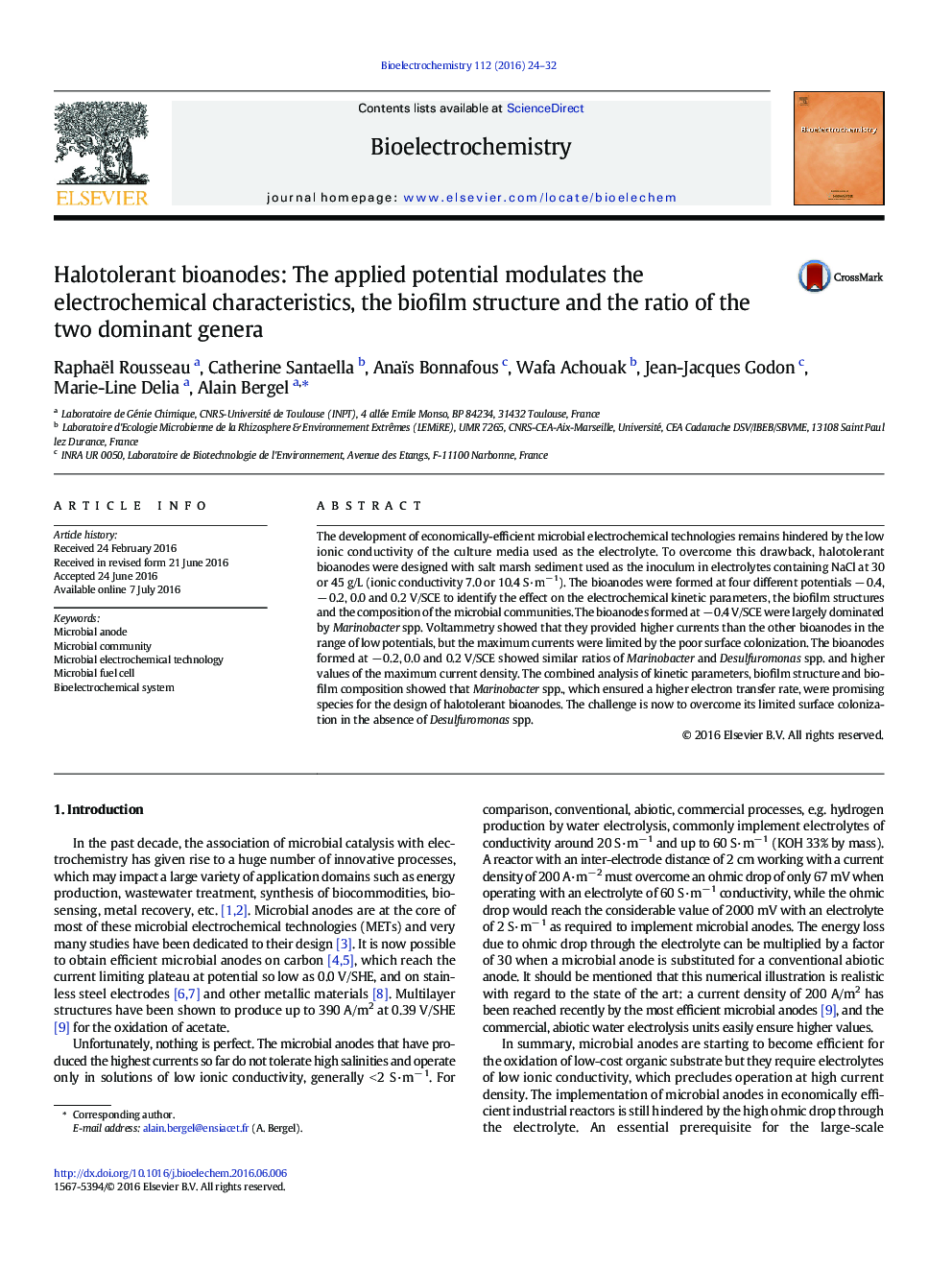| کد مقاله | کد نشریه | سال انتشار | مقاله انگلیسی | نسخه تمام متن |
|---|---|---|---|---|
| 1267757 | 1496901 | 2016 | 9 صفحه PDF | دانلود رایگان |

• Microbial anodes were formed in highly saline electrolyte (NaCl 30 to 45 g/L).
• Bioanodes formed at − 0.4 V/SCE led to efficient electrochemical kinetics.
• Bioanodes formed at − 0.4 V/SCE were dominated by Marinobacter spp.
• Other bioanodes showed similar ratios of Marinobacter spp. and Desulfuromonas spp.
• Electrode colonization by Marinobacter was poor in the absence of Desulfuromonas.
The development of economically-efficient microbial electrochemical technologies remains hindered by the low ionic conductivity of the culture media used as the electrolyte. To overcome this drawback, halotolerant bioanodes were designed with salt marsh sediment used as the inoculum in electrolytes containing NaCl at 30 or 45 g/L (ionic conductivity 7.0 or 10.4 S·m− 1). The bioanodes were formed at four different potentials − 0.4, − 0.2, 0.0 and 0.2 V/SCE to identify the effect on the electrochemical kinetic parameters, the biofilm structures and the composition of the microbial communities. The bioanodes formed at − 0.4 V/SCE were largely dominated by Marinobacter spp. Voltammetry showed that they provided higher currents than the other bioanodes in the range of low potentials, but the maximum currents were limited by the poor surface colonization. The bioanodes formed at − 0.2, 0.0 and 0.2 V/SCE showed similar ratios of Marinobacter and Desulfuromonas spp. and higher values of the maximum current density. The combined analysis of kinetic parameters, biofilm structure and biofilm composition showed that Marinobacter spp., which ensured a higher electron transfer rate, were promising species for the design of halotolerant bioanodes. The challenge is now to overcome its limited surface colonization in the absence of Desulfuromonas spp.
Journal: Bioelectrochemistry - Volume 112, December 2016, Pages 24–32